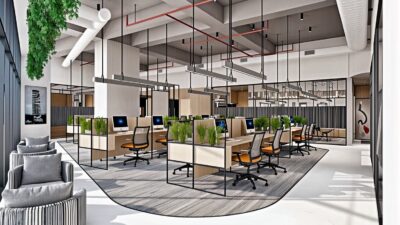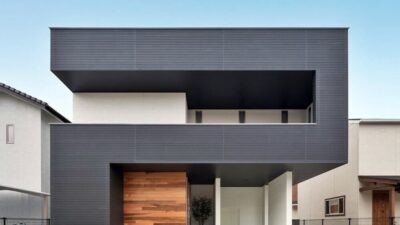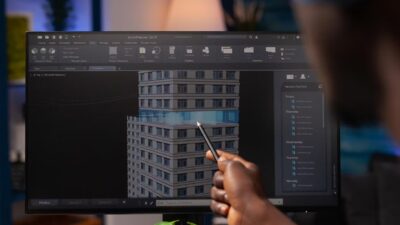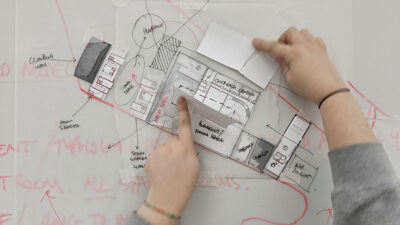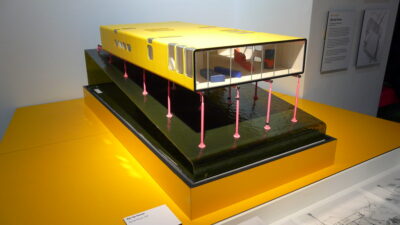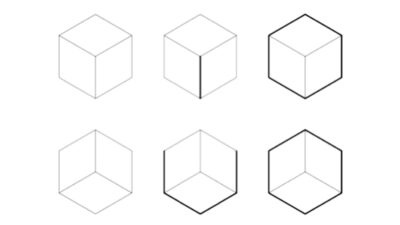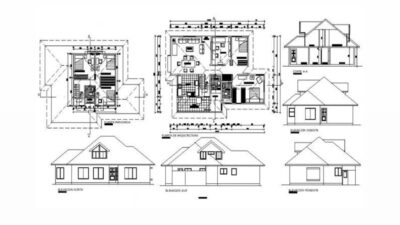In this article, we delve into the concept of architectural design studios, shedding light on their fundamental purpose, the unique teaching methodologies employed, and the iterative nature of the design process.
We will explore how these studios equip aspiring architects with the skills and mindset necessary to tackle diverse projects, fostering a deep understanding of architectural theory and its practical application.
Studio Purpose
Architectural design studios serve as a foundational platform for introducing aspiring architects to systematic approaches to design thinking and methodology. These studios are structured to guide students through various architectural projects, each incorporating distinct elements like site analysis, client needs, structural typologies, project briefs, and programmatic requirements. Understanding these terms and their application will become clearer as students progress through their studies.
Initial projects in early design studios are usually straightforward and small-scale, focusing on basic architectural theories and principles. As students advance, they encounter projects of increasing complexity and size, demanding more time and in-depth engagement. This progression is designed to immerse students in various aspects of architectural theory and practice, culminating in a comprehensive project that may span an entire semester or year.
Educational Approach and Content in Architectural Design Studios
In various academic settings, the pedagogical approach within architectural design studios often emphasizes a blend of theoretical knowledge and hands-on experiences. The curriculum is designed to intertwine conceptual learning with the practical aspects of architectural projects.
- Instructional Lectures and Demonstrations: Foundational concepts and innovative design strategies are imparted through structured lectures and demonstrations. Attendance, whether physically or via digital platforms, is crucial for students to absorb these essential ideas and later apply them in their design endeavors;
- Independent Study and Exploration: Emphasis is placed on self-guided research and study, encouraging students to delve into weekly topics independently. This practice is essential for deepening understanding and applying learned concepts to ongoing projects;
- Practical Workshops (Tutorials): Regularly scheduled workshops are integral for the hands-on application of theoretical principles. These interactive sessions, often weekly or bi-weekly, are dedicated to advancing project work, allowing students to experiment with and implement their learned knowledge. Active participation and presentation of work in these workshops are key to receiving valuable, constructive critiques.
Collectively, these educational elements ensure a well-rounded understanding of architectural principles and their practical application.
Structure and Elements of Design Tutorials
Design tutorials in architectural studios are customized to meet the unique needs of each project, leveraging the expertise of the tutor and addressing the specific requirements of students. These sessions are adaptable, evolving alongside the developing design work and emerging challenges.
Essential components of a design tutorial include:
- Analysis of Educational Content: A review and discussion of the insights gained from lectures and research;
- Focus on Project-Specific Skills: Special attention to specific skills and techniques, such as architectural drawing, concept formation, or model crafting;
- Clarification of Project Criteria: In-depth discussions about project guidelines and expectations;
- Peer and Mentor Feedback Sessions: Opportunities for sharing work among peers and with tutors for feedback;
- Personalized Feedback (Desk Crits): Individualized critique sessions for tailored advice and guidance;
- Summative Project Reviews: Comprehensive end-of-project evaluations, often including external reviewers;
- Interactive In-Class Assignments: Engaging activities focused on practical skills, such as model construction or sketching.
Being well-prepared for each tutorial, with all necessary materials and ongoing project work, is vital for maximizing the educational experience.
The Iterative Nature
In architectural design studios, design is an ongoing, iterative process. This approach involves a continuous cycle of developing, assessing, and refining concepts. Students should anticipate engaging in diverse activities, such as creating collages, sketching, and constructing models both physically and digitally. This methodology emphasizes the importance of exploration, experimentation, and the understanding that setbacks and restarts are integral to the creative process.
The Outcome in Design Studios
In architectural design education, equal weight is given to both the journey and the outcome. This approach differs from conventional academic evaluations by placing significant emphasis on the developmental process and the end product.
Key evaluation criteria include:
- Problem-Solving Approach: Assessing students’ methods for tackling design challenges;
- Experimental Methods: Evaluating the exploration of various solutions and alternatives;
- Responsiveness to Feedback: The ability to incorporate and respond to critiques and suggestions;
- Final Design Quality: The overall caliber and innovation of the concluding design;
- Consistent attendance, proactive involvement in all activities, and steady progression between sessions are essential for achieving success in these studios.
Feedback Dynamics in Design Studios
Feedback within architectural design studios is an essential tool for personal and professional growth, provided in various formats to offer diverse perspectives and insights.
- Whole-Class Reviews: Collective sessions where the instructor evaluates the group’s work, highlighting strengths, areas for improvement, and common challenges;
- Focused Group Critiques: Targeted discussions within smaller groups, led by the tutor, to address specific issues and facilitate group problem-solving;
- Individualized Feedback: Customized guidance and advice for each student, focusing on their unique progress and needs.
To fully benefit from these feedback mechanisms, students should actively engage in the production of work and participate in discussions. Critical areas to concentrate on during feedback include identifying successful elements and their reasons, pinpointing areas needing improvement, and recognizing unaddressed aspects of the design.
Managing Workload and Independent Study
The workload in architectural design studios is typically demanding, often surpassing official guidelines. Effective management of this workload involves:
- Efficient Time Management: Implementing robust productivity and time organization systems;
- Consistency in Effort: Ensuring regular and sustained effort in each class; procrastination and last-minute work are counterproductive in design disciplines;
- Self-Directed Learning Skills: Cultivating the ability to self-motivate and independently drive learning and exploration;
- Personal Engagement: Developing a deep-seated interest in the subject to fuel daily exploration and creative processes.
Discovering a personal connection or a compelling aspect in each project is crucial for sustaining engagement and passion throughout the course.
Studio Culture
Studio culture in architectural education is distinct and collaborative, mirroring professional architectural practice. Key aspects include:
- Collaboration: Encouraging teamwork to foster problem-solving and idea-sharing, reflecting real-world architectural practices;
- Workspace Dynamics: Depending on the institution, workspace arrangements vary, from dedicated spaces for each year level to flexible ‘hot-desk’ setups;
- Community Engagement: Regardless of physical space, engaging with the studio culture is vital. Working in isolation is less beneficial compared to the collaborative and supportive environment of a studio.
Design studios offer a unique opportunity for creative exploration and experimentation, free from professional constraints. To maximize this experience, students should:
- Embrace the freedom to experiment and test out ideas;
- Communicate openly, sharing thoughts and questions without hesitation;
- Recognize that uncertainty and questioning are common and part of the learning process.
The Role of Technology in Architectural Design Studios
Modern architectural design studios increasingly incorporate technology, significantly impacting the design process. Key technological influences include:
- Digital Modeling: Tools like CAD and BIM allow for precise and detailed architectural models;
- Virtual Reality: VR provides immersive experiences, helping students and clients visualize projects in three dimensions;
- Sustainability Analysis Software: Programs that assess energy efficiency and sustainability are becoming integral in the design process.
These technologies not only streamline design tasks but also open new avenues for creativity and innovation.
The Evolution of Architectural Styles
Over time, architectural styles have evolved, reflecting cultural, technological, and environmental changes. This evolution includes:
- The transition from classical to modern architecture, emphasizes functionality and simplicity;
- The integration of sustainable and eco-friendly design practices in response to environmental concerns.
Understanding this evolution provides a context for contemporary architectural practices and paves the way for exploring architectural abstraction, a concept that challenges traditional forms and functions.
Conclusion
This article has offered a comprehensive overview of architectural design studios, from their purpose and teaching methods to the unique studio culture and workload management strategies. We’ve explored how feedback mechanisms foster learning and how technology is shaping modern design processes.
The evolution of architectural styles sets the stage for further exploration, such as the intriguing world of architectural abstraction. As we’ve seen, these studios are not just about learning architectural principles but also about embracing a collaborative culture, fostering creativity, and preparing for the ever-evolving landscape of architectural design.


